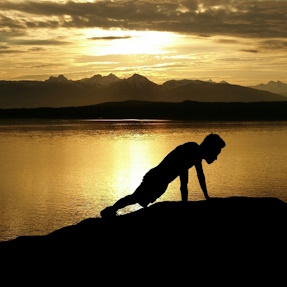
Improve joint pain and stiffness with range-of-motion exercises for arthritis
Arthritis can cause painful and stiff joints, making it challenging to find the motivation to exercise. However, refraining from movement can worsen your condition. Surprisingly, physical activity is precisely what you need when suffering from arthritis. Regular exercise helps keep your joints strong and flexible, alleviating the pain you may be feeling. Additionally, consistent physical activity provides numerous benefits, including increased energy, reduced stress, lower blood glucose, blood pressure, and cholesterol levels, and improved mood.
How to improve joint pain and stiffness with range-of-motion exercises for arthritis
When you have arthritis, moving can be daunting, especially during a flare-up. However, it’s better to keep your activity low-impact and slow rather than not moving at all. Whether you haven’t exercised in years or want to continue practicing safe and practical exercises, joint-friendly moves can help you control your arthritis. Before starting an exercise program, it’s essential to check with your doctor first. Depending on the type of arthritis you have (rheumatoid, osteoarthritis, psoriatic, gout, or fibromyalgia), your doctor can determine the best exercises for you. Your exercise plan may involve working with your doctor and a physical therapist to find the exercise that will benefit you most without aggravating your joint pain.
Range-of-motion exercises
Performing range of motion movements can help alleviate stiffness and improve joint mobility. Examples of these movements include rolling your shoulders forward and backward and circling your arms in a wide arc. Research studies have demonstrated that range of motion exercises can effectively reduce joint stiffness.
Water aerobics or swimming
Water aerobics can be a fun and relaxing way to engage your entire body, including your upper and lower body and mid-section. It can also help reduce the impact on your joints by up to 75% compared to traditional aerobics. Swimming is another excellent non-impact exercise that is gentle on your joints, working all your muscle groups and improving cardiovascular endurance. Additionally, it is important to incorporate strengthening exercises into your routine.
Maintaining muscle mass throughout life is crucial, and lifting weights is one of the most effective ways to achieve this. In addition, building strong muscles provides support and protection for your joints. If you need help determining where to begin, consider working with a personal trainer or physical therapist who can create a tailored strength training program that suits your needs.
Golf
Although golf may not be an intense workout, opting to walk the course instead of using a golf cart can significantly benefit your joints and heart health. Walking the course, swinging the club, and bending down to pick up golf balls can strengthen your upper back, legs, shoulders, wrists, and hands. Walking on a treadmill or outdoors is also a great way to incorporate exercise into your routine.
A treadmill can be a great alternative when the weather outside isn’t great for walking. Using the handlebars for support, you can go at your own pace and simulate walking up hills. This exercise is great for improving your circulation and increasing your heart rate. However, if you prefer to be outdoors, a walk in nature is always a great option. Regardless of where you walk, it can help relieve arthritis pain, strengthen your muscles, and reduce stress.
Cycling
Cycling is a great way to work out all the muscles in your lower body, including your feet. Whether you prefer outdoor cycling with the wind at your back or indoor cycling on a stationary bike, this exercise can benefit you in many ways. If you have back or knee problems, a recumbent bike may be a better option as it supports your back and allows you to extend your legs while cycling.
Elliptical machine
For individuals with arthritis, an elliptical machine is a recommended exercise equipment. The machine’s mechanism assists in the workout, allowing your joints to move in a smooth, circular motion, reducing strain on your lower body. However, if you experience balance or coordination problems, avoid using this machine.
Pilates or Yoga
If you’re new to Pilates or yoga, it’s best to start with a beginners class that focuses on proper form and is slower-paced. These practices improve flexibility, strengthen muscles, and reduce stress. Studies have shown that yoga can help alleviate symptoms of fibromyalgia and rheumatoid arthritis.
Tai Chi
This ancient Chinese exercise is known for relieving those suffering from arthritis through slow and gentle movements. The practice benefits all joints, muscles, and tendons in the body. Studies have shown that Tai Chi can help improve flexibility in individuals with arthritis by increasing their ability to stretch.
Dr. David Samadi is the Director of Men’s Health and Urologic Oncology at St. Francis Hospital in Long Island. He’s a renowned and highly successful board certified Urologic Oncologist Expert and Robotic Surgeon in New York City, regarded as one of the leading prostate surgeons in the U.S., with a vast expertise in prostate cancer treatment and Robotic-Assisted Laparoscopic Prostatectomy. Dr. Samadi is a medical contributor to NewsMax TV and is also the author of The Ultimate MANual, Dr. Samadi’s Guide to Men’s Health and Wellness, available online both on Amazon and Barnes & Noble. Visit Dr. Samadi’s websites at robotic oncology and prostate cancer 911.
